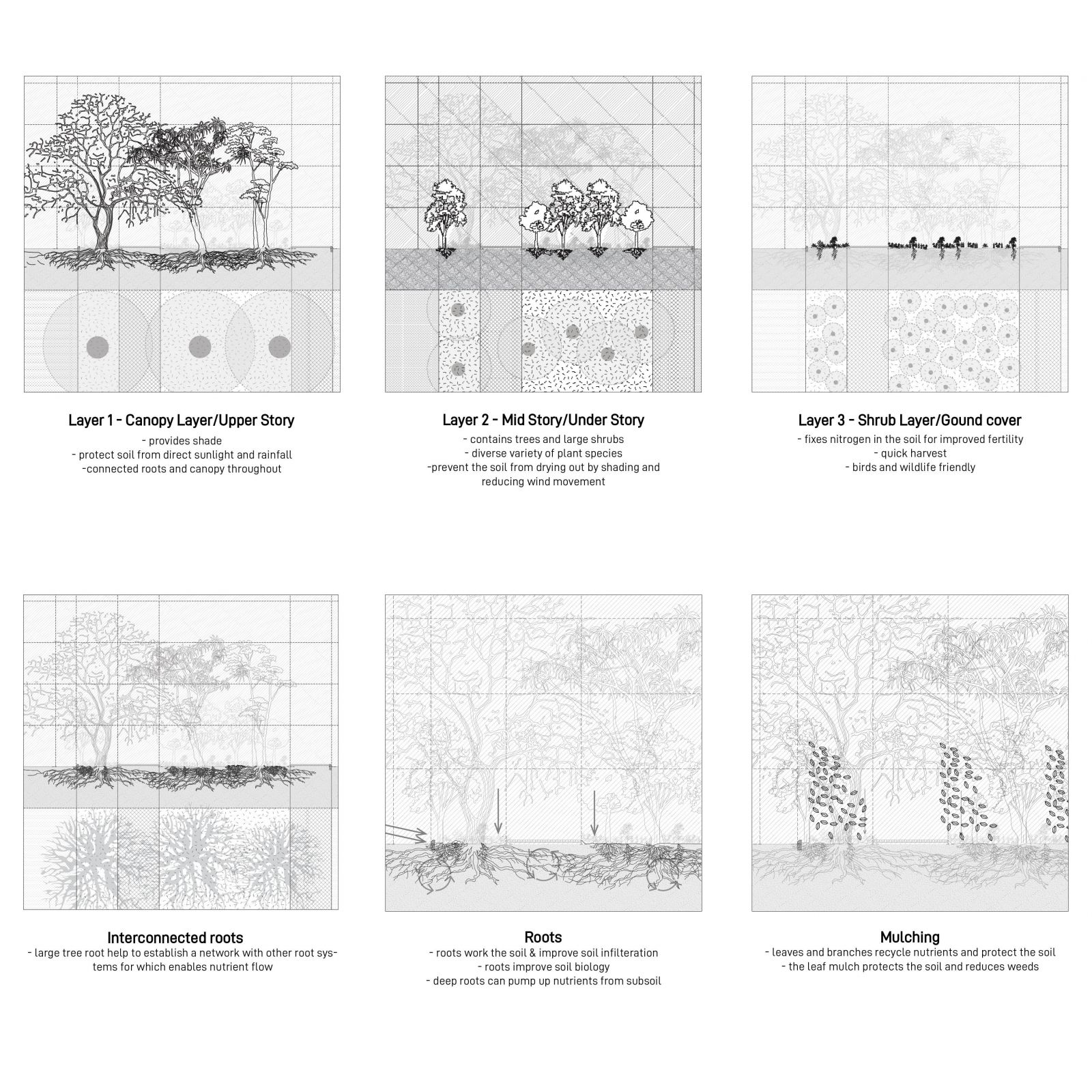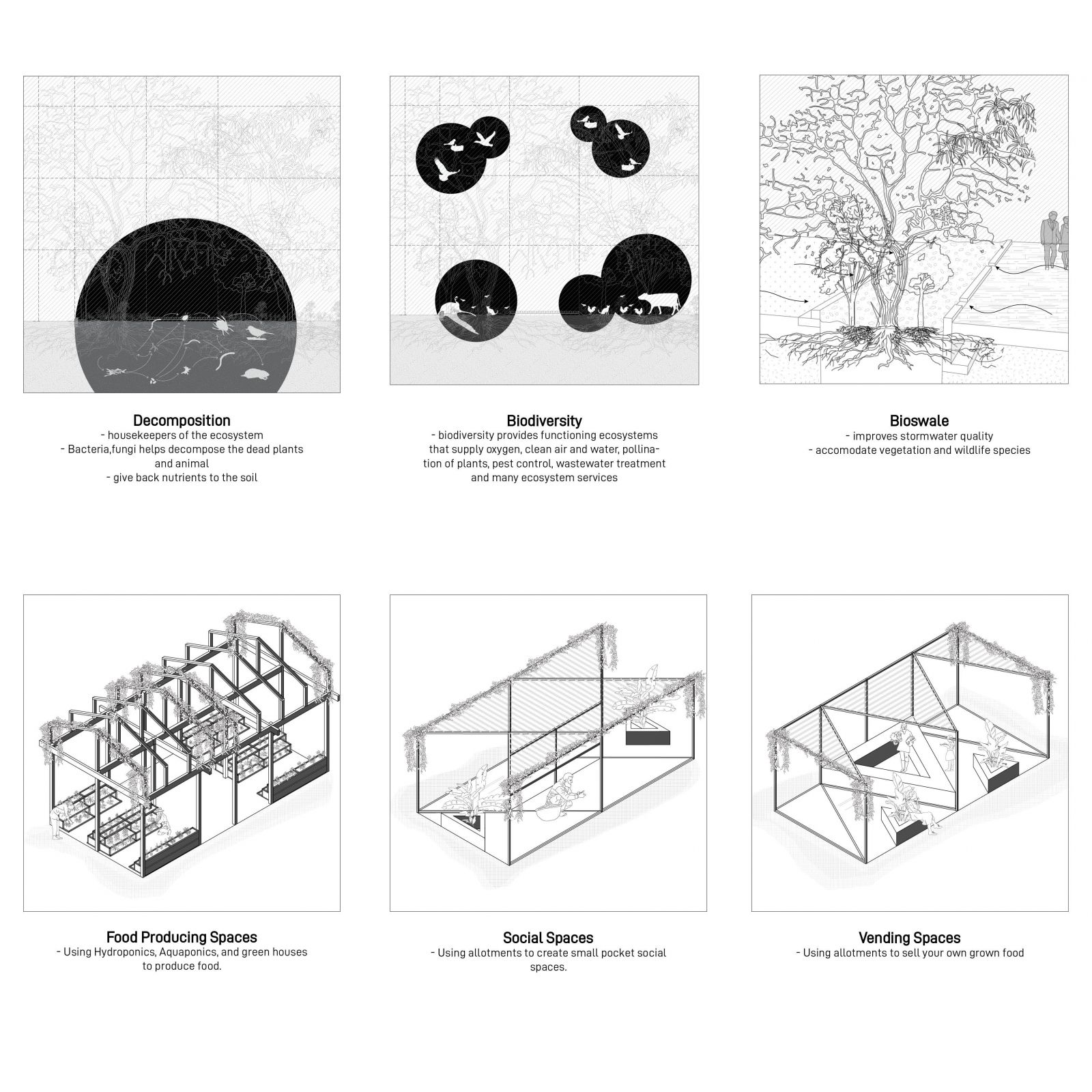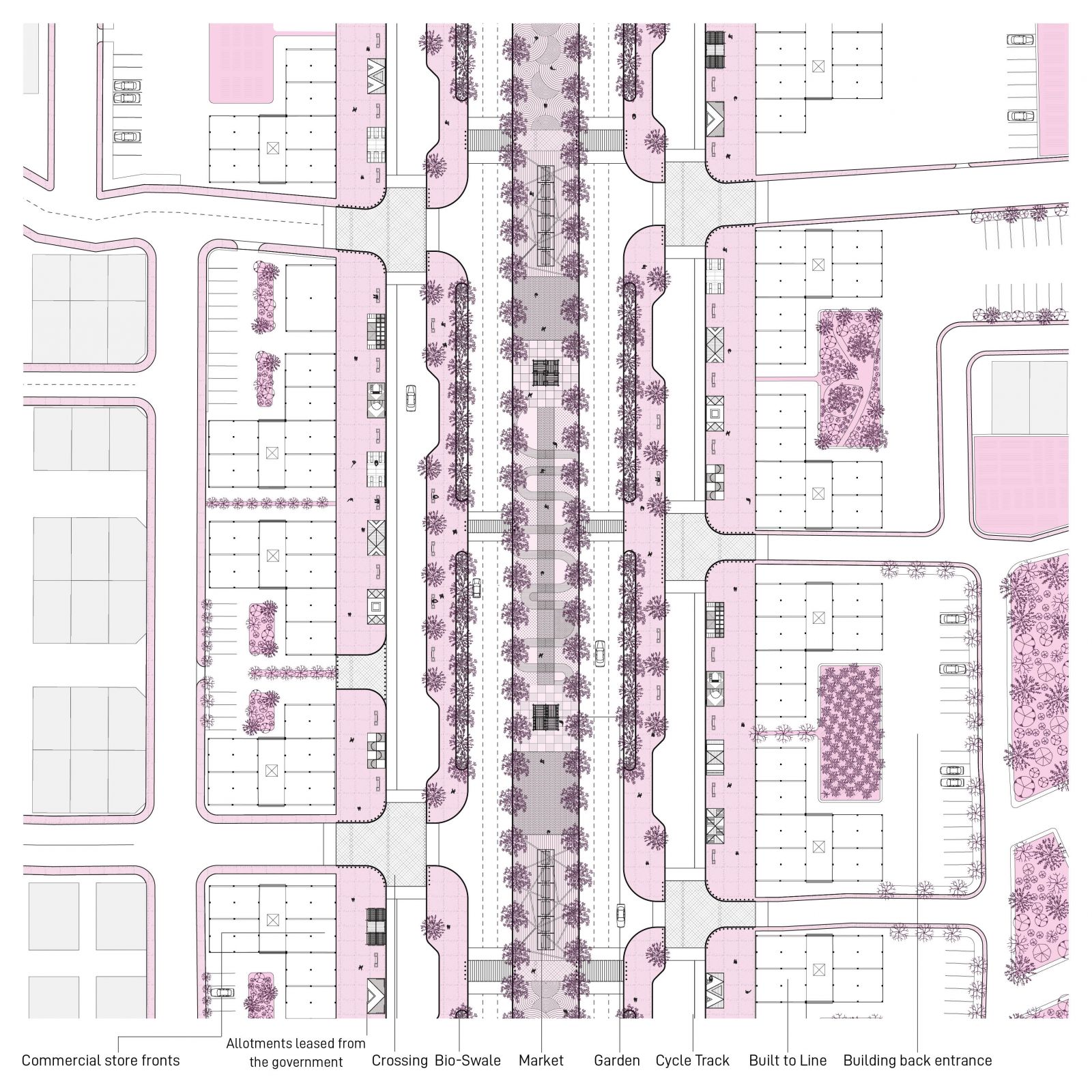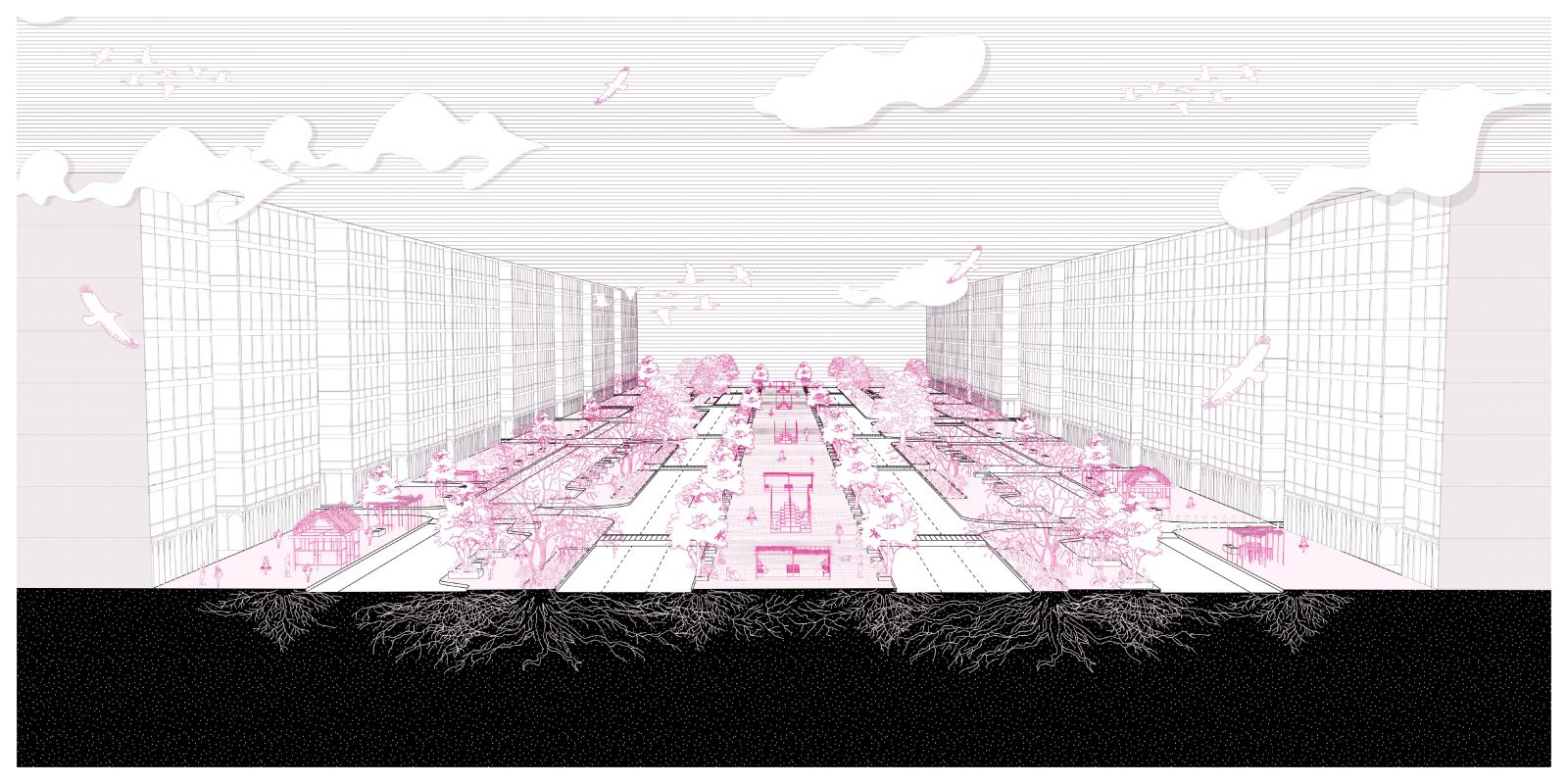Your browser is out-of-date!
For a richer surfing experience on our website, please update your browser. Update my browser now!
For a richer surfing experience on our website, please update your browser. Update my browser now!
Gandhinagar is a grid city where streets take up a large percentage of land. The primary streets in the city have been delineated with large ROW’s but are partly constructed, are under-utilized with inactive edges, and in several areas missing a connected pedestrian network. Hence, the project ‘str-eats’ reimagines ROWs in a productive way by integrating edible gardens, water swales, and green corridors with native species into the overall street design. This is demonstrated on a 100-meter wide ROW, where swales, allotment gardens, and medians are all designed to accommodate a range of social and ecological functions. The footpath is equipped with allotment gardens (4x8 meters), which can be leased by citizens and can be used and designed as per guidelines. These allotments cover a range of possibilities from hydroponics, to seed banks to small pocket social spaces. The big idea is to activate streets, create new programs, and enjoyable spaces for city residents. Over time, the streets will become a continuous network of food and forest gardens interspersed with various activities.
View Additional Work








